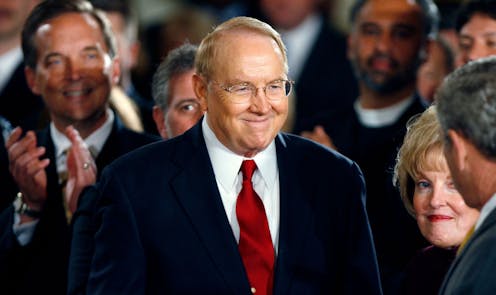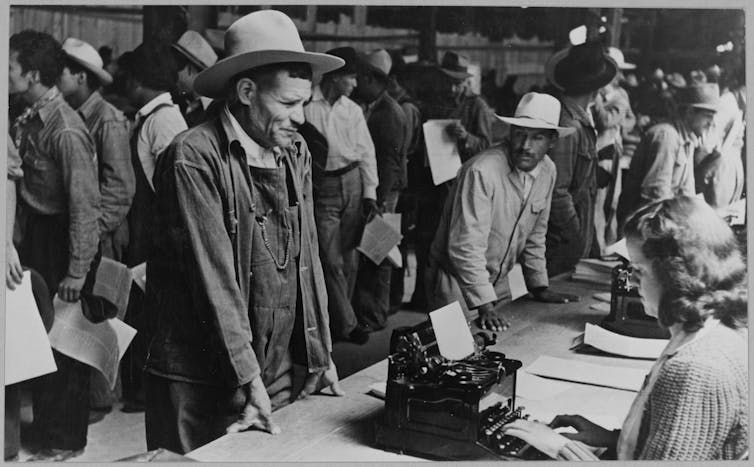Source: The Conversation – USA (2) – By Mojtaba Sadegh, Associate Professor of Civil Engineering; Senior Fellow at the United Nations University Institute for Water, Environment and Health, Boise State University

Worldwide, an estimated 440 million people were exposed to a wildfire encroaching on their home at some point between 2002 and 2021, new research shows. That’s roughly equivalent to the entire population of the European Union, and the number has been steadily rising – up 40% over those two decades.
With intense, destructive fires often in the news, it can seem like more land is burning. And in parts of the world, including western North America, it is.
Globally, however, our team of fire researchers also found that the total area burned actually declined by 26% over those two decades.
How is that possible?
We found the driving reasons for those changes in Africa, which has the vast majority of all land burned, but the total burned area there has been falling. Agricultural activities in Africa are increasingly fragmenting wildland areas that are prone to burning. A cultivated farm field and roads can help stop a fire’s spread. But more farms and development in wildland areas also means more people can be exposed to wildfires.
Drawing on our expertise in climate and wildfire sciences and geospatial modeling, we analyzed global wildfire activity over the past two decades. The results highlight some common misperceptions and show how the fire risk to humans is changing.
Global burned area down, intense fires up
Wildfire is a natural process that has existed for as long as vegetation has covered the Earth. Occasional fires in a forest are healthy. They clear out dead wood and leaf and branch litter, leaving less fuel for future fires to burn. That helps to keep wildfires from becoming too intense.
However, intense fires can also pose serious threats to human lives, infrastructure and economies, particularly as more people move into fire-prone areas.
North and South America have both experienced a rise in intense wildfires over the past two decades. Some notable examples include the 2018 Camp Fire in California and the 2023 record-breaking Canadian wildfires, which generated widespread smoke that blanketed large parts of Canada and the eastern United States, and even reached Europe.
The increase in intense wildfires aligns with the intensification of fire weather around the world. Heat, low humidity and strong winds can make wildfires more likely to spread and harder to control. The number of days conducive to extreme fire behavior and new fire ignitions has increased by more than 50% over the past four decades globally, elevating the odds that the amount of land burned in a particular region sets a new record.

AP Photo/David Zalubowski
But fire weather is not the only influence on wildfire risk. The amount of dry vegetation, and whether it’s in a continuous stretch or broken up, influences fire risk. So do ignition sources, such as vehicles and power lines in wildland areas. Human activities can start fires and fuel climate change, which further dries out the land, amplifying wildfire activity. Fire suppression practices that don’t allow low-intensity fires to burn can lead to the accumulation of flammable vegetation, raising the risk of intense fires.
North America is a fraction of total burned area
In recent years, a growing number of wildfire disasters in North America, Europe and Australia have captured global attention. From the deadly 2025 Los Angeles fires to the devastating 2019-2020 Australian bushfires and the 2018 wildfire in Athens, Greece, flames have increasingly encroached upon human settlements, claiming lives and livelihoods.
However, wildfire exposure isn’t limited to these high-profile regions − we simply hear more about them.
The United States, Europe and Australia collectively account for less than 2.5% of global human exposure to wildfire. Human exposure to fire occurs when people’s homes fall directly within the area burned by a wildfire.
In stark contrast, Africa alone accounts for approximately 85% of all wildfire exposures and 65% of the global burned area.
Remarkably, just five central African countries – the Democratic Republic of Congo, South Sudan, Mozambique, Zambia and Angola – experience half of all global human exposure to wildfires, even though they account for less than 3% of the global population. These countries receive sufficient moisture to support plant growth, yet they are dry enough that trees and plants burn in frequent fires that in some places occur multiple times per year.
Regional trends and drivers of wildfire
We found that wildfire exposure increased across all continents except Europe and Oceania, but the underlying drivers of the increase varied by region.
In Africa, agricultural expansion has led to more people living in fire-prone areas.
In North America, particularly the United States, intensifying fire weather – the hot, dry, windy conditions conducive to spreading fires – has led to increasingly uncontrollable wildfires that threaten human settlements.

AP Photo/Eric Thayer
In South America, a combination of rising drought frequency and severity, intensifying heat waves and agricultural expansion has amplified wildfire intensity and increased the population in fire-prone regions.
In Asia, growing populations in fire-prone areas, combined with more days of fire-friendly weather, led to increased human exposure to wildfires.
In contrast, Europe and Oceania have seen declining wildfire exposures, largely due to more people moving to cities and fewer living in rural, fire-prone zones.
What to do about it
Communities can take steps to prevent destructive wildfires from spreading.
For example, vegetation management, such as prescribed fires, can avoid fueling intense fires. Public education, policy enforcement and engineering solutions – such as vegetation reduction and clearance along roads and power lines – can help reduce human-caused ignitions.
As climate change intensifies fire weather and people continue to move into fire-prone zones, proactive mitigation will be increasingly critical.
![]()
Mojtaba Sadegh receives funding from the US Joint Fire Science Program, the US National Science Foundation, and NASA. He is affiliated with the United Nations University Institute for Water, Environment and Health.
John Abatzoglou receives funding from the US National Science Foundation and US Joint Fire Science Program.
Seyd Teymoor Seydi does not work for, consult, own shares in or receive funding from any company or organization that would benefit from this article, and has disclosed no relevant affiliations beyond their academic appointment.
– ref. Wildfire disasters are increasingly in the news, yet less land is burning globally – here’s why – https://theconversation.com/wildfire-disasters-are-increasingly-in-the-news-yet-less-land-is-burning-globally-heres-why-261072















